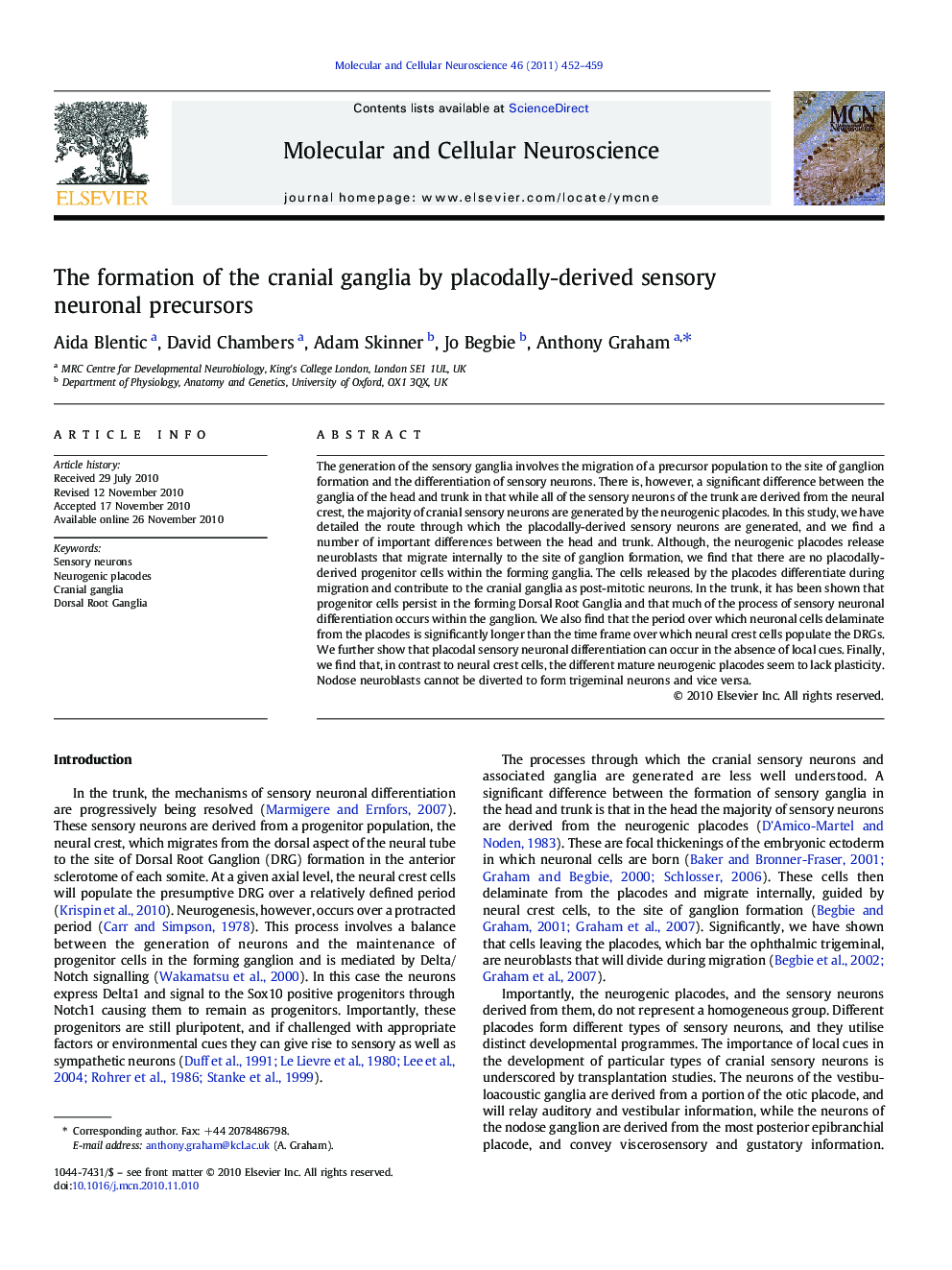| Article ID | Journal | Published Year | Pages | File Type |
|---|---|---|---|---|
| 10956565 | Molecular and Cellular Neuroscience | 2011 | 8 Pages |
Abstract
The generation of the sensory ganglia involves the migration of a precursor population to the site of ganglion formation and the differentiation of sensory neurons. There is, however, a significant difference between the ganglia of the head and trunk in that while all of the sensory neurons of the trunk are derived from the neural crest, the majority of cranial sensory neurons are generated by the neurogenic placodes. In this study, we have detailed the route through which the placodally-derived sensory neurons are generated, and we find a number of important differences between the head and trunk. Although, the neurogenic placodes release neuroblasts that migrate internally to the site of ganglion formation, we find that there are no placodally-derived progenitor cells within the forming ganglia. The cells released by the placodes differentiate during migration and contribute to the cranial ganglia as post-mitotic neurons. In the trunk, it has been shown that progenitor cells persist in the forming Dorsal Root Ganglia and that much of the process of sensory neuronal differentiation occurs within the ganglion. We also find that the period over which neuronal cells delaminate from the placodes is significantly longer than the time frame over which neural crest cells populate the DRGs. We further show that placodal sensory neuronal differentiation can occur in the absence of local cues. Finally, we find that, in contrast to neural crest cells, the different mature neurogenic placodes seem to lack plasticity. Nodose neuroblasts cannot be diverted to form trigeminal neurons and vice versa.
Related Topics
Life Sciences
Biochemistry, Genetics and Molecular Biology
Cell Biology
Authors
Aida Blentic, David Chambers, Adam Skinner, Jo Begbie, Anthony Graham,
